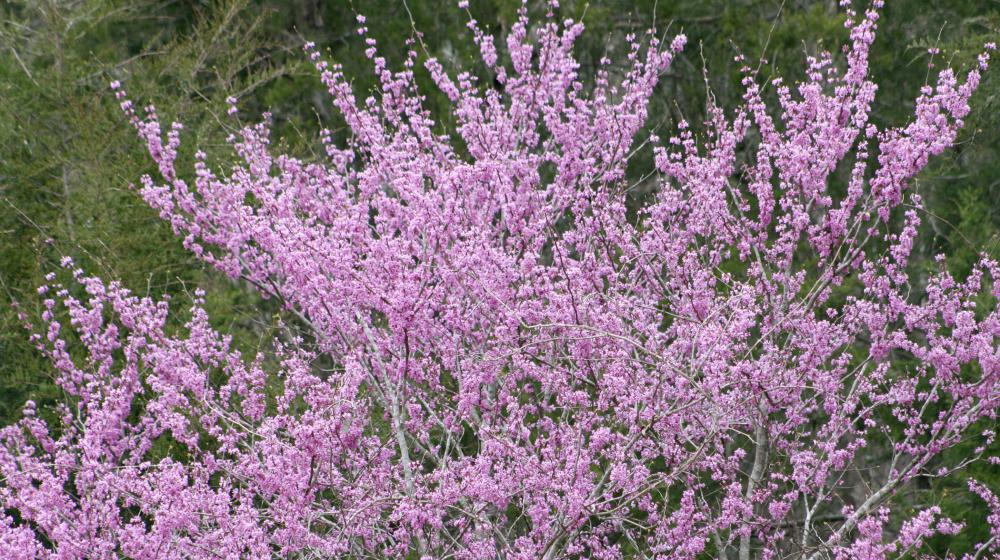Tree of the Month: Eastern Redbud

Fun fact about Eastern Redbud trees: early Native Americans and settlers created remedies to whooping cough by brewing its bar. (Photo by MSU Extension)
By Ms. Chloe Evans
Could your yard use some beautification? Always! Do you want a small tree with beautiful, fragrant flowers? The eastern redbud is just for you!
This small deciduous tree is best known for its early blooming, soft pink flowers, and it is often used in landscaping. Most anyone can add this beauty to their yard because of its incredible adaptability to different soil conditions and its small stature. Being a small tree, eastern redbuds reach 23 to 30 feet in height with a diameter of only 10 inches.
Here are some characteristics of eastern redbuds:
- Leaves: Eastern redbuds have glossy, heart-shaped leaves that are bright green until they transition into shades of yellow and orange in the fall.
- Bark: Eastern redbuds start out with smooth light brown bark that darkens and becomes furrowed and rough as the tree ages.
- Fruit: Being closely related to beans and peas, the fruit is a thin pod containing flat, brown seeds that often remains through the winter.
- Habitat: Native to North America, eastern redbuds are found from Canada to Mexico along forest edges, beneath hardwoods, and near streams.
Historically, early Native Americans and settlers created remedies to whooping cough by brewing its bark. Currently, squirrels and deer find value in eating its foliage and fruit seeds, and the flower petals make an excellent accessory to salads adding a citrus taste.
If you want to learn more about Mississippi’s trees, check out MSU Extension Publication 146 Know Your Trees.
Subscribe to Extension for Real Life
Fill in the information below to receive a weekly update of our blog posts.









